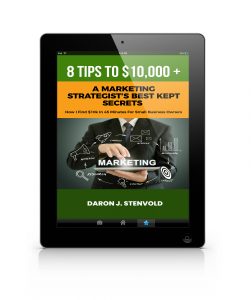Last time I gave you a laundry list of tips and tricks you can use to make your word-of-mouth program work for you. Hopefully, you’ve taken a look and decided which ones are the best fit for your company, products, services, and target customers, so you can put them to work in your word-of-mouth campaign.
We are going to wrap up this series on word-of-mouth, where we give you the specific steps to create a word-of-mouth campaign.
Now, let’s take a look at those steps:
- Seed the market. Find some way to get the product into the hands of key influencers.
- Provide a channel for the influencers to talk and get all fired up about your product.
- Offers lots of testimonials and other resources.
- Form an ongoing group that meets once a year in a resort and once a month by teleconference.
- Create fun events to bring users together and invite non-users. Saturn, Harley-Davidson, and Lexus have all been successful with this approach.
- Develop videos and clips on your Web site featuring enthusiastic customers talking with other enthusiastic customers.
- Create custom Videos for each potential customer.
- Hold seminars and workshops.
- Create a club with membership benefits.
- Pass out flyers.
- Tell friends.
- Offer special incentives and discounts for friends who tell their friends.
- Put the Internet to work.
- Do at least one outrageous thing to generate word-of-mouth.
- Empower employees to go the extra mile.
- Encourage networking and brainstorm ideas.
- Run special sales.
- Encourage referrals with the use of a strong referral program.
- Use a script to tell people exactly what to say in their word-of-mouth communication.
These are all amazing ways you can get the word out about your products and services and start a word-of-mouth campaign that takes on a life of its own. Before you can release your word-of-mouth campaign out into the world, you need to go through the checklist to make sure you’ve covered all the essentials.
Here’s your word-of-mouth campaign checklist:
- Are all of your communications sending the same simple message? If it can’t survive word-of-mouth, it’s not a compelling story.
- Is your product positioned as part of a category? Ex.”A dandruff shampoo that doesn’t dry your hair.”
- Are your examples outrageous enough to be shared?
- Do you enhance your materials with success stories from real people?
- Are you using experts effectively and in an objective manner?
- Have you created mechanisms so people can follow up on the word-of-mouth they hear, as well as simple ways of inquiring or ordering?
- Have you made the decision process easy for customers?
- Have you created events and mechanisms so that your prospects hear about your product once a year and it is easier to try or buy?
These are all essential elements to take. Keep in mind when taking a second or even third check over your word-of-mouth campaigns. I hope you’ve found this series on word-of-mouth to be a great resource and are getting ready to put it into action for your own products and services.
Remember, if you need help with anything in this series, try our GUIDED TOUR to access the best resources, tools, and business coaches you can find.




